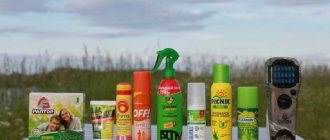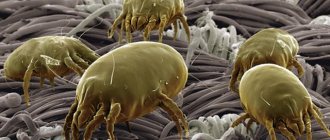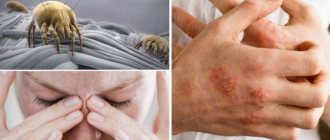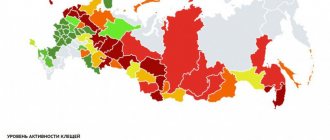Author: Michael Potter Updated: October 4, 2021
The destruction of ticks in a suburban area is a necessity for all summer residents who plan to live outside the city during the summer season. After all, few people want to put themselves and their loved ones in danger. Tick bites can transmit many dangerous infections, including encephalitis. Finding insects in your area is quite easy.
When you're sweaty, dry your face with a towel and simply run it over nearby bushes and grass. If after this there are still ticks on it, it’s time to start treating the area. Of course, if there are no ticks left on the towel, this does not mean that there is not a single dangerous insect in the entire area. In any case, it is necessary to treat the area for ticks.
There are more and more ticks every year - summer residents complain. Perhaps this is because the forests are no longer treated for insects, so they freely move to summer cottages. Acaricidal treatment of forest plantings (one of the most effective measures to destroy ticks) can lead to irreparable consequences - all insects, birds and animals, and not just ticks, will be poisoned. In addition, chemicals tend to accumulate in the soil, pollute the environment, and spoil the environment.
Destruction of ticks on the site
Pyrethroids are an excellent means for killing ticks on the site - this remedy has proven itself among many summer residents. If you decide to fight insects on your site, then feel free to use synthetic or natural pyrethroids. They are safe for humans and dogs. In addition, pyrethroids do not tend to accumulate in the ground, poisoning all surrounding plants.
Of course, chemical pyrethroids have some disadvantages:
- Kill insects (for example, bees);
- Toxic to fish;
- Toxins for cats.
It is justified to use pyrethroids if you want to treat a playground, garden or paths. However, their use on large areas is not recommended. The destruction of ticks in the country should be consistent and systematic. It is better to treat small areas little by little rather than irrigate all surfaces of the site at once. As for pyrethroids, they are also available in natural form.
Pyrethrin is a natural insecticide that is found in some daisies, which are often planted in certain flower beds. For example, use Caucasian chamomile and Persian chamomile. Dalmatian chamomile can also be used as a tick repellent. These flowers can serve both as decoration for your flower beds and as guards for your plots. Naturally, the pyrethrin contained in chamomile is not as rich as the synthetic one, but it is still quite active.
Mr. Summer Resident recommends: actions if a tick has grabbed onto the skin
If you find a parasite on your body, you should immediately consult a doctor, who will provide the necessary assistance: he will painlessly remove the entire insect, send it to the laboratory for examination, and give an injection if necessary.
You can get it out yourself, armed with a thread or tweezers. Using a thread, make a knot near the proboscis and progressively pull up, removing the arachnid. Actions should be smooth without harshness.
The ideal is to remove the tick without damaging the body and avoiding suppuration. However, if it is damaged, the area should be wiped with an alcohol solution, and the remaining part (the head) is recommended to be removed using a needle, after which the area is treated again. The extracted arthropod must be placed in a glass container and taken to a specialized place.
Prevention of ticks in the country
Destruction of ticks is the second thing. And first, before the tick epidemic began and they began to sit on every bush, at least minimal preventive measures should be taken. Remember that ticks are most likely to appear in cluttered areas. Therefore, remove all fallen leaves, remnants of vegetation, and also, do not be lazy to frequently mow your country lawns. One of the main breeding grounds for ticks is mice - they are a source of insect larvae. In addition, it is from mice that ticks receive encephalitis infection, which can then be transmitted to people whom ticks bite. Therefore, indirect control of ticks is active control of mice.
How to find out if there are ticks in the garden
I will share my own simple but effective way of checking a site. I carry out the procedure early in the morning, after the dew has dried:
- I take a piece of white fabric at least 1 m wide. It is best to use unnecessary waffle material - it is easier for ticks to catch their paws on a bumpy surface.
- I wind it up and attach the material to a long stick.
- I slowly move the white “flag” across the surface of the earth. I most carefully check dense plantings and paths - ticks like to settle in short grass.
White color is the most attractive color for ticks. If they are on your site, sooner or later they will rush to a homemade “search device”.
Top best products for treating an area against ticks
Dobrokhim M
The insecticidal drug Dobrokhim M is designed to combat harmful insects in residential and industrial buildings. The product can be used in communal institutions (dormitories, hotels), catering organizations, preschool institutions, in medical and preventive structures - to perform final disinfection.
The form of the drug is a concentrated water-based emulsion. Active substance: Malathion (organophosphorus component at a concentration of 57%) and its enhancers. The drug fights equally well against different types of harmful insects. It is effective and has an original recipe. The product has a minimal degree of danger for warm-blooded animals due to the presence of an aqueous solvent in the composition. After contact with surfaces, the liquid leaves no traces and does not disrupt their structure. Both professional organizations and household users can use the insecticidal composition. The consumption of the drug differs depending on the type of insect:
- 0.25 ml/l - against mosquitoes and their larvae;
- 2.5 ml/l - against mosquitoes and fleas;
- 4 ml/l - from fly larvae;
- 5 ml/l - against flies, ants and bedbugs;
- 10 ml/l - against rat mites and cockroaches;
- 10 ml/l - against lice and scabies mites.
It is recommended to prepare an aqueous emulsion from the concentrate immediately before use. The drug must be mixed with plain tap water for 5 minutes. The maximum permissible period for using the prepared solution is 8 hours. You can spray the product using a regular garden sprayer. Packaging volume - 1 l.
Price: ₽ 2,500
Ram (1 l)
The insectoacaricidal composition “Taran” is made in liquid form and is a highly concentrated aqueous emulsion. The product effectively fights ixodid ticks in natural conditions, and also helps to destroy insects in everyday life. Insectoacaricide can be used to treat:
- residential and non-residential buildings;
- catering enterprises;
- medical institutions;
- preschool and school educational institutions;
- residential amenity premises;
- dormitories;
- hotels and hotels.
The active active ingredient of the drug is zetacypermethrin (10%). The product has a powerful insecticidal, acaricidal and provoking effect on those insects that have settled in the house. Once settled on household surfaces, the drug remains effective for 2 months. "Taran" is suitable for controlling persistent insect populations. The drug is used sparingly and lasts a long time. The aqueous base provides excellent toxicological properties. The product leaves no traces, does not smell, and does not accumulate in the surrounding space. Packaging volume - 1 l.
Price: ₽ 1,125
Tsifox (500 ml)
Tsifox is a concentrated drug that is designed to effectively combat:
- scabies mites;
- mosquito and fly larvae;
- rat mites;
- fleas;
- bedbugs;
- cockroaches;
- ants;
- lice;
- imago.
The effect of the drug is clearly visible after 20 minutes. The active substances of Tsifox penetrate the body of parasitic insects through the oral cavity and chitinous covering. The active component cypermethrin has a paralytic effect on insects and leads to their rapid death. Insects die after 20-25 minutes. The residual effect of the drug lasts for 1-3 months. In open areas, the product is effective for 1-6 weeks (if plants are treated against midges) and 1-1.5 months (when fighting ixodid ticks). The effectiveness of the drug in water lasts from 1 to 3 weeks. If you treat clothing with Tsifoks, it will remain on its surface for about 14 days. Package volume: 500 ml.
Price: ₽ 2,150
Level of harmfulness of ticks
Is this microscopic pest really that scary? A simple calculation shows that if only 50 larvae survived from each female in the offspring (and she is capable of producing 200 eggs), then with 15 generations per year the number of individuals would cover the globe with a layer of 2 meters. Therefore, even a small initial number of mites in the garden can give rise to a sudden epiphytotic outbreak of pest reproduction and lead to the death of infected crops in the shortest possible time. Bud mites are especially dangerous for plants. Their number in one kidney ranges from 100 or more individuals. Therefore, mites are considered one of the most dangerous plant pests.
Anti-tick sprayers
Backpack sprayer "Titan"
The Titan backpack sprayer is suitable for treating large areas of land with insecticidal and pesticide preparations. The convenient and voluminous sprayer is made in a black and light green color. It can be successfully used for processing greenhouse crops, wooded areas and landscaping areas. The sprayer was created by the Polish company Marolex and has the following advantages:
- good capacity;
- safe materials with high chemical resistance;
- ease of use;
- simplicity of design;
The presence of seals on the telescopic rod that prevent it from becoming contaminated with sand and soil. Titan sprayers are available for sale in several variations of working tank volume: 12 l, 16 l and 20 l.
Price: ₽ 5,200
Pump sprayer Park
The Park reusable pump sprayer is designed for the agricultural industry and for treating areas against ticks. The volume of the package is 8 liters, and it lasts for a long time. The flask is made of high quality polyethylene and has a comfortable black plastic handle. The package also includes:
- comfortable belt with adjustment function;
- telescopic rod, complemented by a corrugated handle;
- corrugated hose (length - 1.5 m);
Filter (protects the hole through which insecticides and fertilizers are sprayed); The Park sprayer is characterized by the best quality, reliable and easy to use. It can be used many times
Price: ₽ 410
Correct processing algorithm
Treating the area against ticks
Treatment against ticks is called disinfestation, the drugs are called acaricides. Each product comes with instructions that you should first read. It is imperative to adhere to the recommended dosage and dilute the composition in the specified proportions.
There is a wide choice of how to spray an area against ticks. You can buy the drug in a specialized store, from special services employees, or order it online. Anti-mite treatment is carried out using a household spray bottle or a spray bottle.
It is necessary to spray the land in calm weather to prevent the poison from spreading in a random direction. The spray bottle should be directed in the direction of the wind so that the spray does not fly towards the person. You need to cultivate the soil, garden, and grass early in the morning or in the evening. You also need to monitor the weather. Precipitation during the first three days after disinfestation reduces the effectiveness of the drug; re-treatment will be required after 7-10 days.
Important!
The garden needs to be treated in early spring before the leaves bloom. At such a time, ticks are not yet active; the poison will not allow them to begin full-scale colonization of the territory. During the flowering period of trees, tick baiting is prohibited. The poison is deadly to bees and other insects that pollinate plants.
It is allowed to treat a suburban area at any time, but ensure that the use of poisons does not cause harm to the environment. In nature, products are used to treat the area 3 days before you plan to go on vacation.
Signs of a plant being damaged by garden mites
Common signs of damage by garden mites are wilting of the plant, curling of the leaves without visible damage. When carefully examining the leaf blade of garden plants, on the underside of the leaf blade, under a magnifying glass, you can notice tiny yellowish or white dots - puncture sites of the mite. Individual points in the shortest possible time merge into spots clearly visible to the naked eye, and the shoots with leaves are still shrouded in a thin, barely noticeable web, sometimes as thick as felt. If there is a large accumulation of pests on the underside of the leaves, you may notice very small grayish dry skins (like dandruff). These are the remains of the larvae after molting. The web serves as protection for the pest from the effects of natural enemies and drugs. Each species has distinctive signs of the damage it causes, which allows you to immediately determine what type of mite has settled on the plants.
Signs of plant damage by spider mites
The most famous and widespread are spider mites (Tetranychidae). There are more than 1,200 species of spider mites, found everywhere, including Antarctica. Very small insects. Males 0.3-0.6 mm, females up to 1.0 mm. The yellow-green color matching the color of the foliage allows ticks to lead a secretive lifestyle. Leaf blades damaged by spider mites become brownish-brown, curl and fall off. In autumn, the female lays up to 10-12 eggs per day.
Over the course of a year, in regions with a long warm period, up to 25 generations of spider mites hatch. The eggs are attached by a web to the stems of weeds. Spider mites can destroy up to 80% of the crop (for example, Grape itch, or Felt mite). According to experts, the pest is a carrier of gray rot diseases and viral infections of agricultural and ornamental crops.
Plant buds affected by bud mite. © otokkatieto
Signs of gall mite infestation
Anatomically, gall mites (Eriophyidae) differ from brown and spider mites in the absence of hind legs. This species has only 2 anterior pairs, the posterior ones are atrophied. Favorite garden crops are cherry plum, pear, plum. Damaged leaves form growths of galls, in which the mite is located “with all the comforts.” The leaf itself becomes covered with pimples and curls. The tick lives and reproduces in the galls throughout the warm season. If gall “houses” are visible in a dried, unrolled leaf, it means the plants are affected by gall mites. If such branches are found on trees and bushes, they must be carefully cut off and burned. The presence of a gall mite is also indicated by “witches’ brooms”, which are bunches of sterile shoots with underdeveloped leaves.
Signs of brown garden mite infestation
The brown tick's favorite habitats are garden crops, with particular preference given to apple trees. The tick has a reddish-brown color. Females lay eggs in the buds and by the end of flowering, young females lay new eggs of the next generations. By the end of summer, the leaves are entangled with thousands of almost invisible mites, which destroy the tree, dehydrating it. The plant weakens and dies.
Tick activity period
The period of activity of ticks changes annually. This variability is explained by fluctuations in air temperature and humidity.
Most often, mites are activated at temperatures ranging from 7 to 20 degrees and high air humidity. Ticks are afraid of the sun, so they are difficult to find in sunny and dry weather. The ideal attack time for these insects is morning and evening hours.
Today, there are two periods of their activity:
- The first period is May and June. Every year during these months the soil rapidly warms up to 7 degrees, and the average air humidity reaches 70%. Such weather conditions are the ideal time for these insects to breed. Due to this, their activity increases.
- The second period begins at the end of August or beginning of September. At this time, species of ticks dangerous to animals become active. People are not afraid of such ticks, but they still shouldn’t let down their guard.
The following test will help you detect ticks in your summer cottage. A piece of white fabric is prepared for it. It is better to take waffle or flannel fabric - it is better for pincers to stick to it. This fabric is soaked in fresh sweat and tied with two knots to the handle of a shovel. Instead of a handle, a long stick will do. With this structure you need to go through the entire territory. Particular attention should be paid to areas with tall grass. In this case, the fabric must literally be dragged along the ground.
If after such a check, in addition to plant debris and other insects, mites are found, the area must be treated. Found parasites should be burned immediately. It is strictly forbidden to crush them with your hands or feet. This will not cause any harm to the tick. A person who picks up a tick runs the risk of being bitten.
Ixodid tick: why is it dangerous for humans?
Many people believe that all ticks are dangerous and panic when they find an arachnid creature on a blade of grass, or, God forbid, on the skin.
In fact, many of the ticks that live in nature do not carry dangerous diseases.
Another common myth is that the encephalitis virus is only present in ticks. In fact, ticks are its carriers. The reservoir for the virus is animals, both wild and domestic. For example, a tick bites an infected bird, and the virus, after entering its body, multiplies and accumulates. When a tick attacks a person, the virus accumulated in the salivary glands or ovaries enters his blood. The tick itself does not experience any inconvenience from the presence of the virus and stores it in its body for a long time. The appearance of the tick is unlikely to help determine whether the tick is encephalitis or not; this requires a special laboratory examination.
It should be noted that the virus can be found not only in adults, but also in larvae and nymphs.
Tick-borne encephalitis is present in raw goat or cow milk. The boiled product does not pose any danger.
After removing a tick from the head, most people are sure that it jumped from a tree. But ixodid ticks are not able to rise above fifty centimeters above the ground. Clinging to a person, they crawl upward, choosing the warmest and most vulnerable area of the body; the tick can spend several hours choosing a place to bite.
There is an opinion that a tick bite is most likely if a person is wearing white clothes. This myth was born thanks to observations of specialists collecting ticks. They attach a white rag to a stick and “mow over” the area; this method allows them to see the insect faster. And the tick's visual apparatus is primitive; in fact, it does not distinguish colors. He sits on the grass, spreads his front pair of legs apart, and then grabs everything that moves.
Description of garden mites
Ticks belong to a group of very small arachnids. The body length ranges from 0.03 mm to 1.0 cm in males, from 0.05 mm to 3.0 cm in females. The body is round, covered with setae or sometimes microscopic warts, divided into 2 parts - the cephalothorax and abdomen. There are 2 pairs of simple eyes on the head. With its piercing-sucking mouthparts, the mite pierces the tissue and sucks out plant juice. 6 pairs of appendages that act as legs help the animal move. The legs are five-membered. Hence the name - arthropods. The body color is red, brown, gray-green, yellowish-green or green and depends on the color of the main host.
Distribution area of ticks
In Russia, the most common species is the garden spider mite. The distribution area covers the chernozem and non-chernozem zones of the European part of Russia, Transcaucasia, and southern regions. The brown fruit mite has moved further to the northern regions, but under the conditions of a limited warm period it manages to form only 1-2 generations. As a species, in the south brown garden mites are the most harmful and can form 4-5 full generations during the warm season. Gall mites are less common and most often breed on certain garden, forest and park crops.
Ticks and diseases
Ixodid ticks are carriers of many dangerous diseases. Moreover, one tick bite can lead to several diseases at once, which can lead to complications and death.
The most dangerous disease is tick-borne encephalitis. The virus is dangerous for the nervous system; complications will affect the spinal cord and brain. Symptoms of influenza-like encephalitis are similar to those of a cold - aching joints, muscle pain, weakness. The meningeal form is characterized by the same symptoms, but severe headaches and chills are felt. Timely consultation with a doctor is necessary, otherwise there is a risk of remaining disabled (this is in the best case) and even dying.
An equally dangerous disease after a pest bite is tick-borne borreliosis or tick-borne lyme. The incubation period of the disease lasts from a week to one month. The symptoms are the same as those described above, but a clearly defined red ring almost always appears at the site of the bite. Lyme disease is treated with antibiotics, but the advanced form is difficult to deal with. The consequences of the disease are severe and rare forms of arthritis, arthrosis and dermatitis.
If you are bitten by a tick, the symptoms of typhus and relapsing tick-borne typhus are characterized by chills, fever up to 40 degrees, a feeling of weakness and heavy sweating. With typhus, areas of skin necrosis and subsequently a rash are possible. With relapsing typhus, a cherry-colored papule develops.
Ticks are carriers of the piroplasmosis virus. It is not dangerous for humans, but it can seriously harm pets. Piroplasmosis in animals is manifested by high fever, lethargy, diarrhea, and lack of appetite.











